The G.Skill KM570 ΜΧ Mechanical Keyboard Review: Sturdy & Efficient
by E. Fylladitakis on August 4, 2017 8:00 AM EST- Posted in
- Mechanical Keyboards
- Peripherals
- G.Skill
- Keyboard
- Cherry MX
The G.Skill KM570 MX Mechanical Gaming Keyboard
Due to its plastic body and understated design, an untrained eye can easily mistake the G.Skill KM570 MX for a typical <$30 office keyboard. In fact, visually it is not much different than the membrane-based Zalman K650WP $30 keyboard that we reviewed last year, with even the company logo printed at the same spot. A closer look however reveals that the KM570 MX has actual mechanical switches and that the plastic body of the keyboard hides the steel frame beneath the keycaps.
We received the US layout version of the G.Skill KM570 MX. It is a 108 keys keyboard that is compatible with the 104 keys ANSI layout, with four extra keys added to support extra functions. It has a 6.25× Spacebar and seven 1.25× bottom row keys. The company logo is etched on the Spacebar key. G.Skill took the classic approach with the keycap character etching and the secondary characters remain at the bottom half of the keycap where, as we will see later on, the light from the LEDs does not reach them.
Despite its classic design, the G.Skill KM570 MX has some support for advanced functions. Many of these are available via Fn keystroke combinations, with said Fn key replacing the right Windows key. Used in combination with the Fn key, the F1-F4 keys launch basic OS applications, F5 toggles on and off “game mode”, which disables the Windows key, F6 toggles between 6 and n key rollover, and F9-F12 perform basic media playback actions. Three out of the four additional keys above the numpad offer direct sound volume controls, with the fourth key being the Macro Recording (MR) key. The MR key initiates the on-the-fly recording of keystroke macros and allows them to be stored into any key, replacing its original function.
The lighting effects of the keyboard are also controllable via keystroke combinations that include the Fn key. In that scenario, F7 changes the pre-programmed lighting effects, F8 allows for the programming of a basic custom profile that will illuminate only the keys specified by the user, and the arrow keys adjust the lighting effect speed and brightness.
Although it might be hard to tell from the pictures, the G.Skill KM570 MX is a rather tall keyboard. The tilt adjustment feet are tiny and hardly lift the backside of the keyboard, which is already high enough for comfortable typing even without unfolding them. It has a contoured design that should allow the fingers to comfortable reach each and every key.
As we mentioned above, the G.Skill KM570 KX has two tiny rear feet that barely lift the already very tall keyboard. It has five small anti-skid rubber pads attached, two very small round ones at the top corners and three longer ones across the lower side of the keyboard’s bottom.
The removal of a few keycaps revealed a milky white steel plate and genuine Cherry MX switches. G.Skill produces the KM570 MX with either Red, Blue, Brown, or Silver (Speed) switches. Our version came with the Cherry MX Brown switches, which are relatively soft and provide quiet, tactile feedback. The keyboard is using Cherry’s cross-type supports beneath the larger keys and the Spacebar key.
Even though there's only a single LED per switch, the white backplate of the KM570 MX creates a very nice, even visual effect. Our KM570 MX features only red LEDs, and that is one of the two main differences between it and the more advanced KM570 RGB. The keycap design however leaves the secondary/bottom character unevenly illuminated, which is a significant aesthetic dissonance, especially when it comes to the company’s logo on the Spacebar key.
The removal of the plastic covers gave us a better look of the thick white steel frame. The main PCB of the keyboard is permanently attached to the steel frame, ensuring that the main parts of the keyboard are safe. Its plastic covers are also fairly thick and can survive a bit of punishment, but they scratch easily and are prone to fingerprints.
The heart of the G.Skill KM570 MX is a modern NXP LPC11U35F USB 2.0 microcontroller. It is not a powerhouse but it is a fairly good chip, sporting a Cortex-M0 50 MHz CPU and 64 kB of on-chip flash memory. Considering that the KM570 MX is a straightforward product that doesn't include advanced macros, software programming, or hardware/software profiling, this controller is more than sufficient.



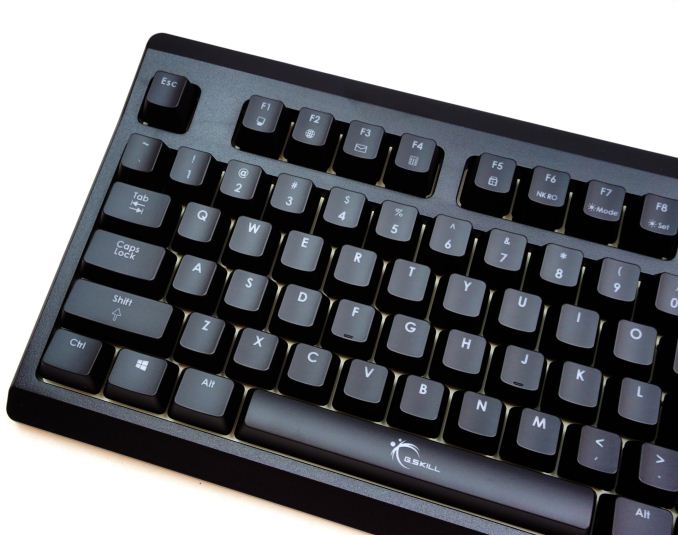
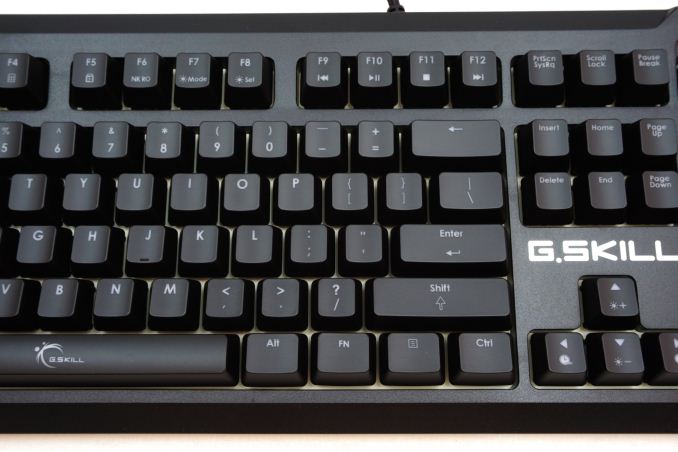


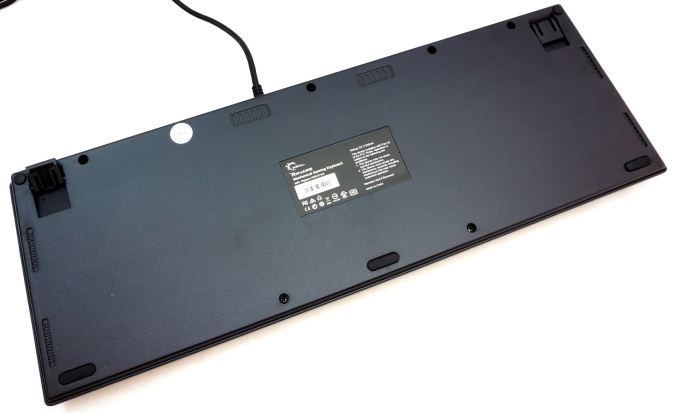
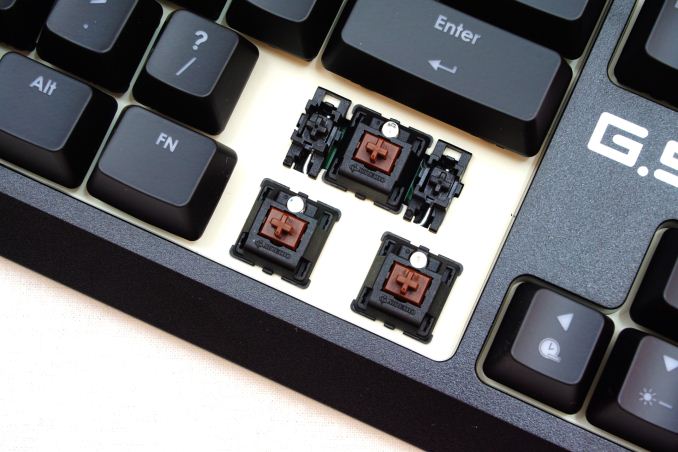
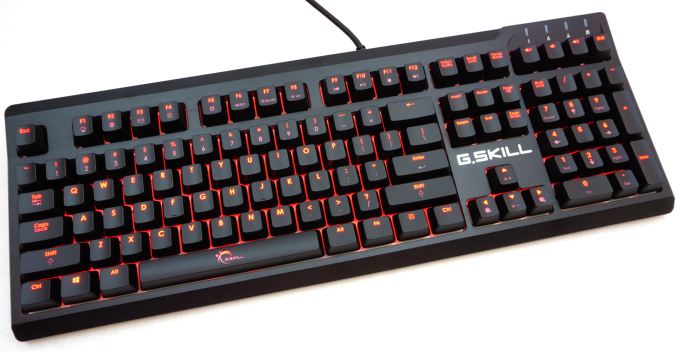
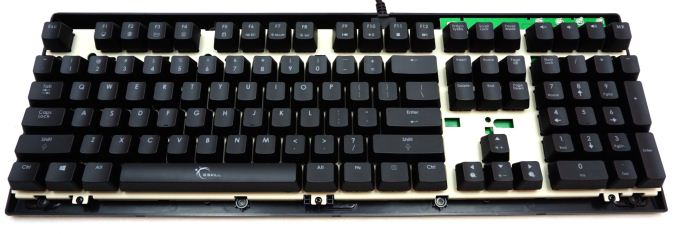

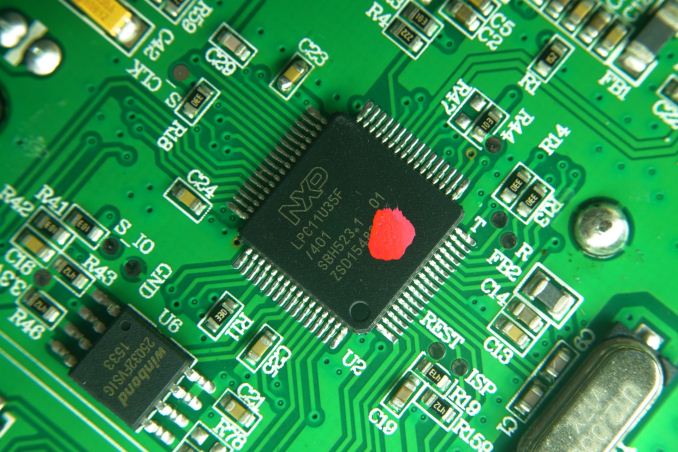








21 Comments
View All Comments
Ssoyd - Sunday, August 6, 2017 - link
You're getting pretty hard up for things to review when you choose an over priced keyboard.Ssoyd - Sunday, August 6, 2017 - link
I can type just as well on a $10 keyboard.damianrobertjones - Monday, August 7, 2017 - link
I do type faster on my mech keyboard compared to the standard type. Not that much faster but it is easier.BrokenCrayons - Monday, August 7, 2017 - link
People are silly and will invent any number of reasons why they think they're gaining benefits that offset the added cost. Companies would be foolish not to take advantage of those people. That applies to basically any product sold including computer interface devices.Dug - Monday, August 7, 2017 - link
Wish list:Low profile keys (~6mm vs. 11.5), mx brown or equivalent, macros, backlight, no numberpad.
So tired of these ergonomically incorrect mechanical keyboards that make a ton of noise. I watch people type on these and cringe. Good wrist rest is needed that extends to end of desk so arms don't drop.
DanNeely - Tuesday, August 8, 2017 - link
If you want quiet you're going to have to go for an oring mod; especially since you want low profile which means less room for key travel before bottoming out. I got one with reds because they're one of the "silent" switches; the clack of them bottoming out was, while not as awful as blue switches I tried in retail, several times louder than any membrane keyboard I'd ever typed on. Modding it quieted it to within the normal range for the latter. Not silent, but no longer anti-socially loud.karanzale - Wednesday, August 9, 2017 - link
thanks for sharing this amazing post , you have shared very helpful article. https://fitnessgears.org/elliptical-machines-revie...Kakti - Wednesday, August 9, 2017 - link
I've had the RGB MX-Brown version for a few month now and love it. It's literally my first mechanical keyboard since the old IBMs (been using some higher end Microsoft board for last 5+). While the method of setting up macro's isn't the best, it's super easy once you learn how to do it. And it's stored on the keyboard so you can plug it into any computer and it'll have the macros saved. The RGB software was also a little rough around the edges for the first 10 minutes, but once I figured out you could "drag and drop" a color across a region of keys and then pick out the individual ones later, it was also no problem.Overall I'm very happy with mine, the colors are super vibrant but by far the most important aspect is that there's no lightbleed. Whether between keys or light coming out the bottom, G.Skill made this keyboard perfect for gaming in a dark room. The only complaint I have, which Anand mentioned, was that some keys have their main icon/letter on the top (primarily just the F keys). The light isn't as strong for the top icon compared to the bottom, so the F keys are a little harder to see than they should be for a keyboard of this quality. Other than that, it's built like a tank, braided cables, no lightbleed, etc. I strongly recommend it if you're in the market for an RGB 10-key board.
zogus - Friday, August 18, 2017 - link
Cherry MX switch keyboards are more or less predictable nowadays. I'd like to see more reviews of mechanical keyboards using other technologies.aptoide apk - Saturday, August 19, 2017 - link
http://iaptoideapk.com/Great Post! All 5 predictions circle around”Data”. From data created to data collected and data analyzed to derive meaningful insights is truly transforming the world around us!